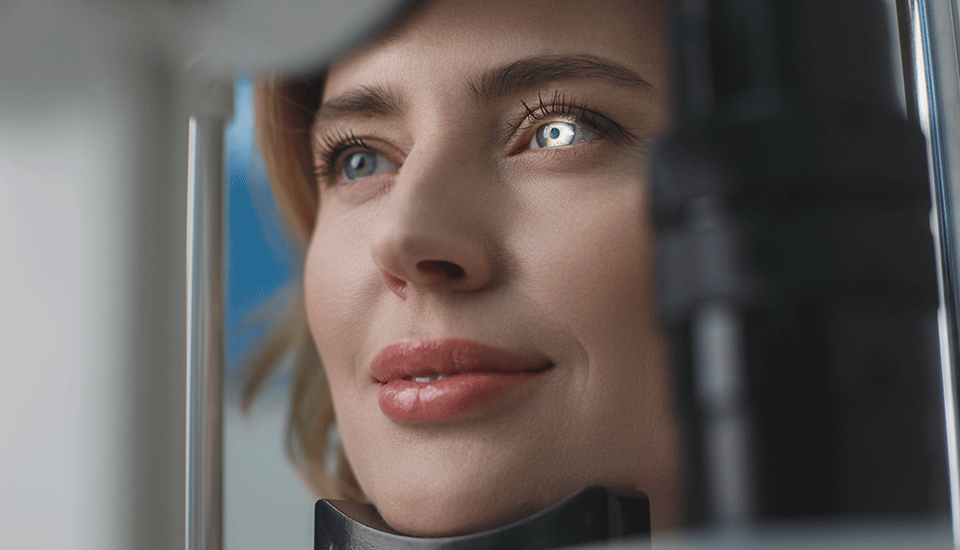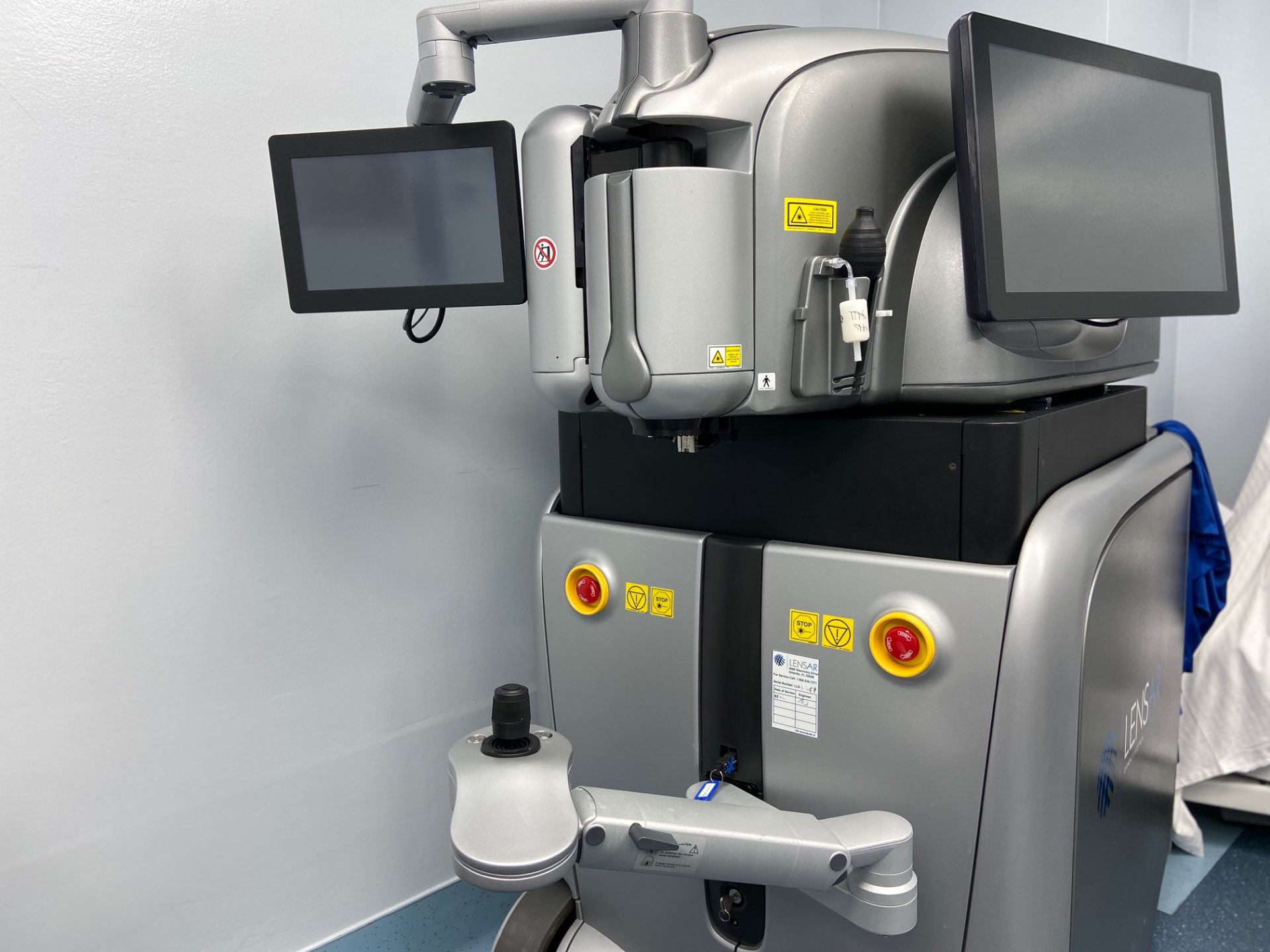
Femtosecond Laser Cataract Surgery Information
OVERVIEW OF FEMTOSECOND LASERS
A femtosecond laser is a medical device that can be used to perform various steps in many different eye surgeries. It is approved by the Food and Drug Administration (FDA) to perform some of the steps of cataract surgery (approved use). It is also used to perform some of the steps of clear lens extraction or refractive lens exchange (RLE), and to make arcuate incisions in the cornea (AK) to reduce astigmatism (depending on the laser these may be off-label uses). There are benefits and risks associated with the use of the laser, and there are additional costs. This section provides information to help you decide if you would like your ophthalmologist to use a femtosecond laser to perform parts of your eye surgery.
FEMTOSECOND LASER CATARACT VS TRADITIONAL CATARACT SURGERY
In traditional cataract surgery, the ophthalmologist does all of the steps of the surgery by hand. A basic overview steps in cataract surgery include: making incisions in the eye with a keratome or a diamond blade, making a circular opening in the support structure that holds the cataract in the eye (a capsulotomy), breaking the cataract into little pieces with ultrasound waves and vacuuming it from the eye (phacoemulsification), and implanting a new intraocular lens in the eye.
In femtosecond laser cataract surgery, some of the steps of the surgery are done by the laser rather than by hand. To accomplish these steps the femtosecond laser uses an imaging guidance system and a laser cutting system. The femtosecond laser can make precise incisions in the eye, can make a more circular and centered capsulotomy, and can pre-soften the cataract breaking it into tiny fragments. Using the femtosecond laser may reduce the amount of ultrasound energy needed to remove the cataract and improve the precision of some of the steps of the surgery.
If Medicare insurance is paying for your cataract surgery, these steps are considered part of the covered portion of the cataract surgery procedure and are included in the fee, whether created by hand-held instruments or the laser. There is no clear policy on these issues from other health insurers.
Unlike the cutting function, the imaging function of the laser is not part of routine cataract surgery. The imaging system helps assure proper centration of a premium or toric lens in the eye to maximize the visual outcome and benefit of the premium lens. Because imaging is not part of routine cataract surgery, it is not covered by Medicare or any other insurer and is not included in the fee. As such, the fee for using the femtosecond laser is the responsibility of the patient.
Refractive lens exchange (RLE or CLE) is not covered by Medicare or other insurance companies, so the fee for a femtosecond laser refractive operation may be greater.
LASER TREATMENT OF ASTIGMATISM
Patients with astigmatism have several choices for the reduction of astigmatism. Nonsurgical options for astigmatism correction include glasses and contact lenses. Surgical correction of astigmatism can be done with a toric intraocular lens, a limbal relaxing incision (LRI) made manually with a blade, or an arcuate incision made with the femtosecond laser (AK). Refractive surgery such as LASIK or PRK can also treat astigmatism. The shape and size of incisions made with the laser may be more precise than those made by hand. Medicare does not pay for the surgical correction of astigmatism. If you choose a toric IOL, you may be asked to pay the difference between the cost of a standard monofocal IOL and the toric IOL. If you choose astigmatism treatment with an LRI or AK (by hand or with the femtosecond laser), or other refractive surgery, you will be responsible for the fees associated with it.
RISKS ASSOCIATED WITH FEMTOSECOND LASER
This information is an overview of some of the risks associated with femtosecond laser surgery. Use of the laser may increase the total time needed to complete the surgery, and you may need to have the procedure performed in two different rooms at the surgery center. Use of the femtosecond laser may lead to complications, which include but are not limited to: decentration of the corneal or capsulotomy incisions; an incomplete or interrupted capsulotomy, fragmentation, or corneal incision procedure; anterior capsular tear; posterior capsular tear with lens/lens fragment dislocation into the vitreous; corneal abrasion or defect; pain; infection; bleeding; damage to intraocular or extraocular structures; anterior chamber fluid leakage; anterior chamber collapse; and elevated eye pressure.
In the case of an interrupted or incomplete corneal incision, the laser can be recentered and the incisions repeated at a different location, or the incisions can be completed by hand. In the case of an incomplete or interrupted capsulotomy, the procedure may be repeated and completed using a slightly larger diameter or the surgeon may elect to complete the procedure by hand. In the case of an incomplete or interrupted fragmentation, the procedure can be repeated after recentration or the surgeon may elect to complete fragmentation by hand with conventional phacoemulsification treatment. In the case of loss of lens fragments into the vitreous, a separate procedure called a vitrectomy may be necessary to remove the vitreous and lens fragments. If a full vitrectomy is needed, you may need to be referred to a retina specialist for surgical evaluation and management.
If a complication happens during surgery, your surgeon may need to perform another surgery right away to treat it. Your surgeon may discover a new condition or problem for the first time during the surgery. Your surgeon may need to change the plan for surgery to treat this problem or condition right away.

